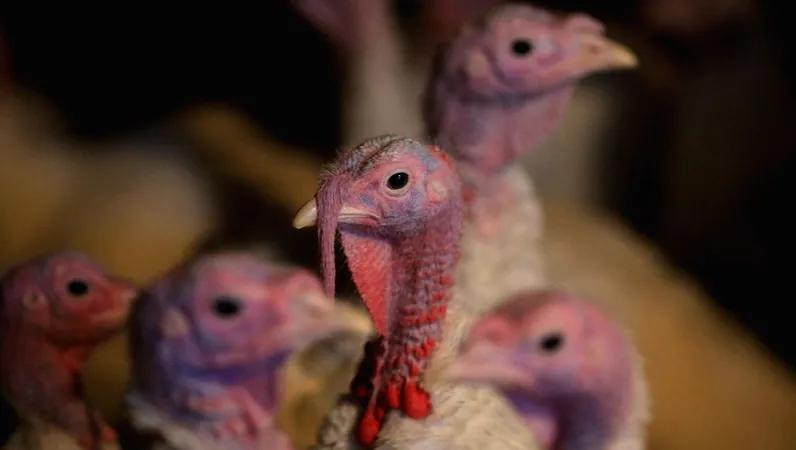
Urgent Alert: 11 People in Oakland County Exposed to H5N1 Bird Flu - Are You at Risk?
2025-01-10
Author: Ming
Introduction
In a concerning development from Oakland County, Michigan, two individuals are currently ill and in isolation due to exposure to the H5N1 bird flu from an infected backyard flock. A total of nine additional people are being monitored for flu-like symptoms, confirmed Bill Mullan, a spokesperson for Oakland County Executive Dave Coulter.
Current Situation
The two sick individuals are undergoing testing for the virus, which has garnered national attention after it was reported to have infected 67 people across the U.S. since 2022, claiming a life just days ago in Louisiana. Initial tests will check for influenza A, and if positive, further subtype testing will determine if it’s the deadly H5N1 strain.
Public Health Advisory
Dr. Natasha Bagdasarian, the chief medical executive for the Michigan Department of Health and Human Services, emphasized that while the risk to the general public is low, certain behaviors can heighten vulnerability. She warned against the dangers of drinking raw milk, interacting with wild birds, or handling sick animals, including pets.
Broader Impacts
Alarmingly, H5N1 has shown it can affect various mammals, not just birds. Instances of infection in coyotes, seals, and even a polar bear have raised eyebrows among health officials. Dr. Bagdasarian cautioned anyone who comes into contact with ill animals to remain vigilant about potential exposure.
Recent Trends in Michigan
In recent months, instances of H5N1 have spread across Oakland, Jackson, and Ottawa counties, with just a few months of heightened risk in spring and summer. The virus previously affected dairy cattle and farm workers, albeit with milder symptoms resulting in full recoveries.
Origin of the Virus
The Michigan Department of Agriculture and Rural Development (MDARD) confirmed that the H5N1 virus found in the Oakland County flock likely originated from wild birds. Expanding on the seriousness of the situation, MDARD Director Tim Boring noted the importance of biosecurity measures to prevent further outbreaks in both commercial and backyard settings.
National Context
Nationally, the situation with H5N1 mirrors that of Michigan, with 90 commercial operations reported affected and 17 million birds impacted since November. Experts assert that seasonal migratory patterns of wild birds contribute to the ongoing outbreaks, increasing the stakes for vigilance in both farming and community settings.
CDC Guidelines and Recommendations
The CDC has reported that while H5N1 is dangerous, most human cases in the U.S. remain mild. The recent fatalities underscore the need for increased awareness and preventive measures among communities, particularly those in agricultural sectors.
Conclusion and Safety Measures
In the face of these challenges, health officials urge the public to practice caution—refrain from handling dead birds, maintain hygiene when dealing with livestock, and stay updated on vaccine recommendations. The emergence of dual infections could pose further threats as mutations of the virus remain a reality.
Final Thoughts
As the H5N1 saga unfolds, experts underscore the importance of preparation and surveillance in agricultural communities to mitigate risks. Stay informed and protect yourself—especially if you or your family are in proximity to livestock! Your health might depend on it!
 Brasil (PT)
Brasil (PT)
 Canada (EN)
Canada (EN)
 Chile (ES)
Chile (ES)
 Česko (CS)
Česko (CS)
 대한민국 (KO)
대한민국 (KO)
 España (ES)
España (ES)
 France (FR)
France (FR)
 Hong Kong (EN)
Hong Kong (EN)
 Italia (IT)
Italia (IT)
 日本 (JA)
日本 (JA)
 Magyarország (HU)
Magyarország (HU)
 Norge (NO)
Norge (NO)
 Polska (PL)
Polska (PL)
 Schweiz (DE)
Schweiz (DE)
 Singapore (EN)
Singapore (EN)
 Sverige (SV)
Sverige (SV)
 Suomi (FI)
Suomi (FI)
 Türkiye (TR)
Türkiye (TR)
 الإمارات العربية المتحدة (AR)
الإمارات العربية المتحدة (AR)